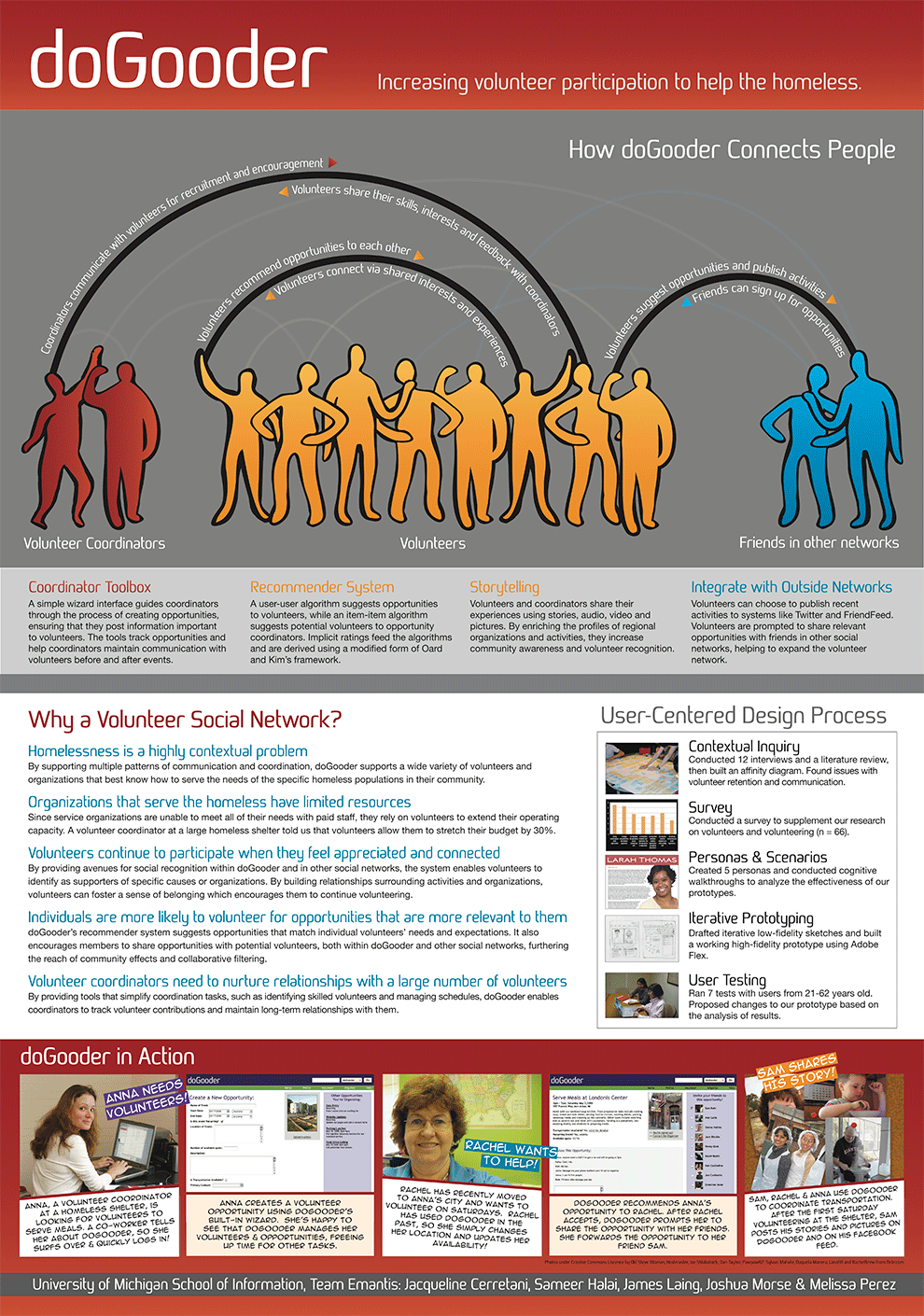 (Click image to enlarge)
(Click image to enlarge)
Overview
As a graduate student, I participated in both the 2007 and 2008 International Computer-Human Interaction conference’s student design competition with a group of other HCI graduate students. The CHI guidelines for 2008 were to “design an object, interface, system, or service intended to support the state of living without a house. Use methods of ethnography and contextual research to understand the problem space, and develop user-centered design solutions to support, assist, enhance or otherwise benefit your target audience.”
Challenges
- As a second-year student, I participated in the project entirely during my own free time, on top of my existing work and graduate class load.
- IRB concerns made it difficult to interview homeless populations directly, so we relied largely on second-hand information.
- Once accepted, we needed to gather funds to travel to Italy to present our findings.
Results
Our team of 5 traveled to Florence, Italy and presented our poster. After the poster presentation, we advanced to the finals, where I presented our project to a panel of 3 judges and were awarded second place.
Process
- We interviewed a variety of homeless service providers, volunteers, and people experiencing homelessness.
- We conducted literature research, then compiled our data in an affinity digramto identify major issues with homelessness.
- We used personas and scenarios to further flesh out our ideas .
- We built a lo-fidelity paper prototype of doGooder, followed by a high-fi prototype in Adobe Flex.
- We then conducted user testing with several users to improve our prototype .
- We submitted a paper on doGooder to the CHI 2008 Student Design Competition, which was accepted.
- We presented a poster at the CHI 2008 conference, and advanced as one of the 4 finalists.
- We presented our team’s project to a panel of judges, and our team took 2nd place at the competition.